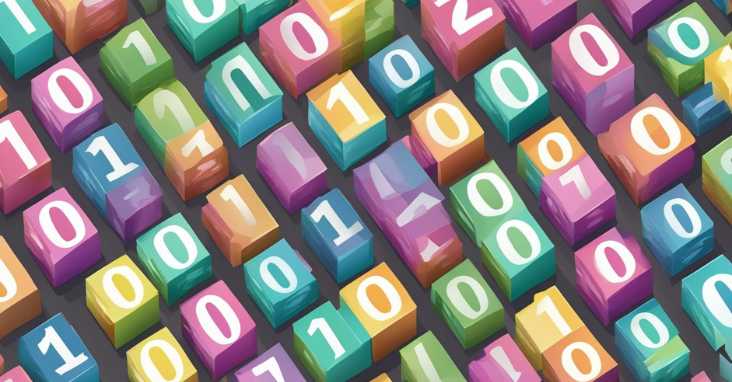How many millions are in a billion? A billion is equal to 1,000 millions. Simple example: If 1 million = 1,000,000, then 1 billion = 1,000,000,000.
When it comes to understanding large numbers, it can be easy to get lost in the magnitude of the digits. One of the most common questions people ask is, “How many millions are in a billion?” The answer may seem straightforward, but there are some nuances to consider.

Understanding the basics of number systems is key to comprehending the answer to this question. In the decimal system, which is the most commonly used system, each digit represents a value ten times greater than the digit to its right. For example, in the number 123, the “1” represents one hundred, the “2” represents twenty, and the “3” represents three. This system makes it easy to understand how many millions are in a billion, but it’s important to keep in mind that not all number systems operate in the same way.
In mathematical conversion, it’s important to note that a billion is equal to one thousand million. This means that there are one thousand millions in a billion. However, it’s worth noting that there are some variations in the way different countries and regions use these terms. For example, in the UK, a billion is traditionally defined as one million million, whereas in the US and most other countries, a billion is defined as one thousand million. It’s important to keep these variations in mind when working with large numbers.
Key Takeaways
- Understanding the basics of number systems is key to comprehending large numbers.
- In the decimal system, a billion is equal to one thousand million.
- There are variations in the way different countries and regions use the terms “million” and “billion”.
Understanding the Basics Of How Many Millions are in a Billion
Defining Million and Billion
When it comes to understanding large numbers, it’s important to start with the basics. A million is a number equivalent to 1,000,000, which is written as a one followed by six zeros. On the other hand, a billion is a number equivalent to 1,000,000,000, which is written as a one followed by nine zeros.
It’s easy to get confused between the two, especially when dealing with financial figures and other large numbers. However, understanding the difference between a million and a billion is crucial for making accurate calculations and interpreting data correctly.
The Concept of Large Numbers
Large numbers such as millions and billions are often used in various fields, including finance, science, and technology. In fact, the concept of large numbers is essential for understanding many aspects of our world, from the size of the universe to the complexity of the human brain.
To help visualize the magnitude of large numbers, it can be helpful to use a table or list to show the number of zeros in each number. For example, a million has six zeros, while a billion has nine zeros. As numbers get larger, the number of zeros increases exponentially, making it more challenging to comprehend the actual size of the number.
It’s also worth noting that there are even larger numbers beyond a billion, such as a trillion, quadrillion, quintillion, sextillion, and nonillion. Each of these numbers has a specific number of zeros, making it essential to understand the concept of large numbers.
For more information on large numbers and their uses, check out this resource from Math is Fun.
Number Systems
Short Scale vs. Long Scale
When it comes to naming large numbers, there are two main systems: the short scale and the long scale. The short scale is used in the United States and modern English-speaking countries, while the long scale is used in many European countries, including France and the United Kingdom.
In the short scale, a billion is equivalent to one thousand million or 1,000,000,000. However, in the long scale, a billion is equivalent to one million million or 1,000,000,000,000. This means that in the long scale, a billion is one thousand times larger than in the short scale.
The difference between the two systems can cause confusion, especially in international business and finance. It is important to be aware of which scale is being used in a particular context to avoid misunderstandings.
Historical Context of Number Naming
The naming of large numbers has a long and complex history, with different cultures and languages using various systems. In ancient Rome, for example, numbers were named using a combination of Latin words and symbols. The English language also has a rich history of number naming, with influences from both Latin and Germanic languages.
The short scale was first introduced in the United States in the 19th century, and it quickly became the standard in American English. However, the long scale is still used in many parts of the world, particularly in Europe.
To learn more about the history of number naming and the differences between the short and long scales, check out this article from Britannica, an authoritative resource on a wide range of topics.
Mathematical Conversion
Multiplying and Dividing by Powers of Ten
When converting between millions and billions, it is important to understand the concept of powers of ten. A billion is equal to 1,000 million, or 1,000,000,000. To convert millions to billions, one can divide the number of millions by 1,000. For example, 500 million is equal to 0.5 billion, since 500 ÷ 1,000 = 0.5.
On the other hand, to convert billions to millions, one can multiply the number of billions by 1,000. For instance, 2.5 billion is equal to 2,500 million, since 2.5 × 1,000 = 2,500.
Using a Calculator for Conversion
For more complex calculations, a calculator may be necessary. Most scientific calculators have a button labeled “EE” or “EXP” that allows users to enter numbers in scientific notation. To convert a number from millions to billions, one can simply enter the number followed by “EE9” or “EXP9”. For example, to convert 750 million to billions, one can enter “750EE6” or “750EXP6”, which will display “0.75” as the answer.
Similarly, to convert a number from billions to millions, one can enter the number followed by “EE-9” or “EXP-9”. For instance, to convert 3.5 billion to millions, one can enter “3.5EE9” or “3.5EXP9”, which will display “3500” as the answer.
It is important to note that when using a calculator, it is essential to double-check the input and output values to avoid errors in calculation.
For more information on converting between millions and billions, please visit Investopedia, a reputable source on financial and investment-related topics.
Practical Applications

Financial Context
Understanding the difference between millions and billions is crucial in various financial contexts. For instance, when discussing government budgets, the numbers can be staggering. A billion dollars is equivalent to 1,000 million dollars, and a trillion dollars is equivalent to 1,000 billion dollars. In the United States, the national debt has surpassed $28 trillion, which is over 28,000 billion dollars.
Investors and traders also use these large numbers to evaluate companies and make investment decisions. For example, a company with a market capitalization of one billion dollars is considered a small-cap stock, while a company with a market capitalization of one trillion dollars is a mega-cap stock.
Scientific and Academic Use
In scientific and academic fields, large numbers are used to express quantities such as distances, masses, and time. For instance, the distance between the Earth and the Sun is approximately 93 million miles, while the mass of the Sun is about 1.989 x 10^30 kilograms.
Scientific notation is a commonly used format for expressing large numbers in a concise and standardized way. In this notation, a number is expressed as a product of a number between 1 and 10 and a power of 10. For example, 1 billion can be expressed as 1 x 10^9.
Understanding the relationship between millions, billions, and trillions is essential in scientific and academic fields where large numbers are frequently used.
To learn more about large numbers and their practical applications, one can refer to resources such as the National Institute of Standards and Technology or the International System of Units.
Visualizing Large Numbers

When it comes to large numbers, it can be difficult to comprehend just how big they really are. This is especially true when dealing with numbers in the millions and billions. In this section, we will explore some ways to visualize these large numbers to better understand their magnitude.
Everyday Comparisons
One way to understand the size of a large number is to compare it to something more familiar. For example, did you know that one billion seconds is equivalent to over 31 years? That’s a long time! Another way to think about it is in terms of money. If you had one billion pennies, you would have $10 million dollars. That’s a lot of money, but it’s still only one-tenth of a billion dollars.
Scale Models and Representations
Another way to visualize large numbers is to use scale models or representations. For example, imagine a tower that is one million feet tall. That tower would be over 190 miles high! To put that in perspective, the distance from New York City to Philadelphia is only about 95 miles. Now imagine a tower that is one billion feet tall. That tower would be over 190,000 miles high! That’s almost enough to reach the moon!
When dealing with large numbers, it’s also important to understand place value and the significance of zeros. For example, the number one million has six zeros, while the number one billion has nine zeros. That’s a difference of three zeros, which represents a thousand-fold increase in size.
To learn more about visualizing large numbers, check out this resource from Math is Fun.
Global Variations in Number Usage

Differences in English-Speaking Countries
The English language is spoken in many countries around the world, and each country has its own way of naming large numbers. For example, in American English, a billion means a thousand million (1,000,000,000), while in British English, a billion means a million million (1,000,000,000,000). This difference can lead to confusion when discussing large numbers across different English-speaking countries.
To avoid confusion, it is important to clarify which definition of billion is being used in a particular context. This can be done by specifying whether the number is in American or British English, or by using scientific notation to express the value.
Number Names in Other Languages
English is not the only language with variations in number naming conventions. In Latin, for example, the word for a million is “mille,” which means “thousand.” This is reflected in the Latin prefix for a million, which is “milli-.”
In French, the word for a billion is “milliard,” which means “thousand million.” This is similar to the American English definition of a billion.
It is important to be aware of these variations in number naming conventions when working with large numbers in different languages. This can help avoid confusion and ensure that everyone is using the same definition of a particular number.
For more information on global variations in number usage, please refer to this source.
Additional Number Categories

From Million to Billion and Beyond
When it comes to large numbers, it can be easy to get confused with all the different terms used to describe them. In the United States, a billion is often used to describe a number that has nine zeros (1,000,000,000), while in some other countries, a billion can refer to a number with 12 zeros (1,000,000,000,000).
To put this in perspective, a million has six zeros (1,000,000), a trillion has 12 zeros (1,000,000,000,000), and a quadrillion has 15 zeros (1,000,000,000,000,000). It’s important to keep in mind that these are all incredibly large numbers and can be difficult to comprehend without proper context.
For example, if someone were to say that a certain country’s debt is in the trillions of dollars, it may be difficult to fully understand the magnitude of the situation without further explanation.
Understanding Crores and Lakhs
In some countries, such as India, different number systems are used to describe large numbers. For example, instead of using millions and billions, they use the terms crores and lakhs.
A crore is equal to 10 million, or a number with seven zeros (10,000,000), while a lakh is equal to 100,000 (1,00,000). These terms are commonly used in India and other nearby countries, and it’s important to understand them if you plan on doing business or traveling in the region.
It’s also worth noting that different countries may use different number systems, so it’s always a good idea to do your research before traveling or conducting business in a foreign country.
For more information on large numbers and different number systems, check out this resource from Math is Fun, a trusted educational website.
Frequently Asked Questions

What is the numerical relationship between a million and a billion?
A billion is equivalent to one thousand million. In other words, a billion is a thousand times larger than a million. This means that it takes one thousand sets of one million dollars to make one billion dollars.
How does the value of a billion compare to a trillion in terms of millions?
A trillion is equivalent to one million million or one thousand billion. This means that a trillion is a thousand times larger than a billion and a million times larger than a million. In terms of millions, a trillion is equal to one million sets of one million dollars.
Can you explain the number of zeros that represent a billion?
A billion has nine zeros. This means that a billion is written as 1,000,000,000.
What is the equivalent of a billion in terms of millions?
A billion is equivalent to one thousand million or one million sets of one million dollars.
How many sets of a million dollars would constitute a billion dollars?
One billion dollars is equal to one thousand sets of one million dollars.
In financial terms, how many million rupees are equal to a billion rupees?
As of January 2024, one billion Indian rupees is equivalent to approximately 13.5 million US dollars. Therefore, one billion rupees is equal to approximately 13.5 sets of one million US dollars or 13,500 sets of one million Indian rupees.
For more information about the numerical relationship between a million and a billion, please visit Investopedia, a reliable source for financial education.
Compare hundreds of Business Intelligence Tools in our Software Marketplace















